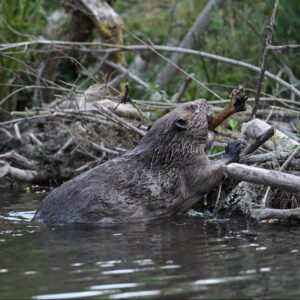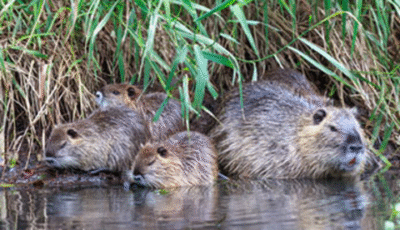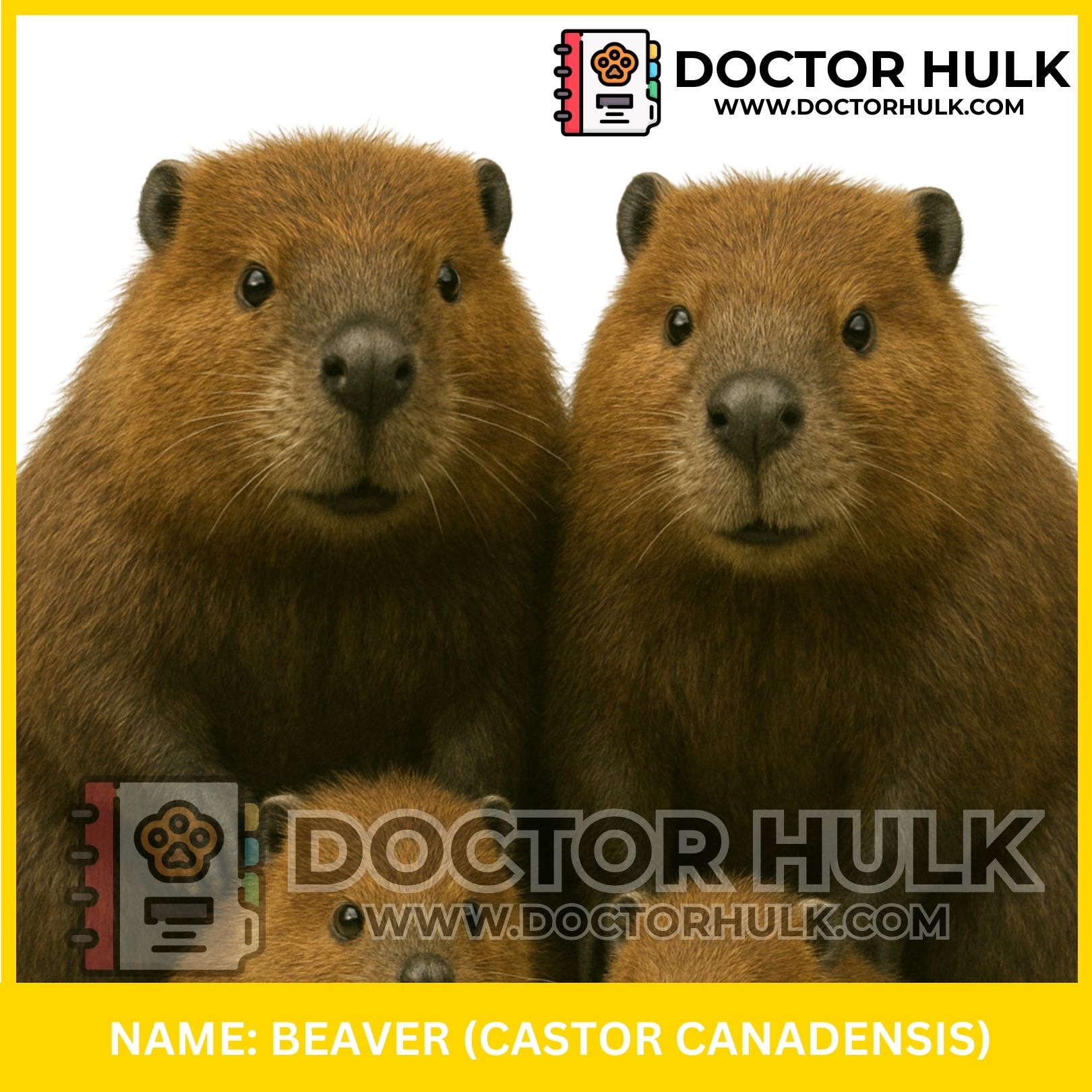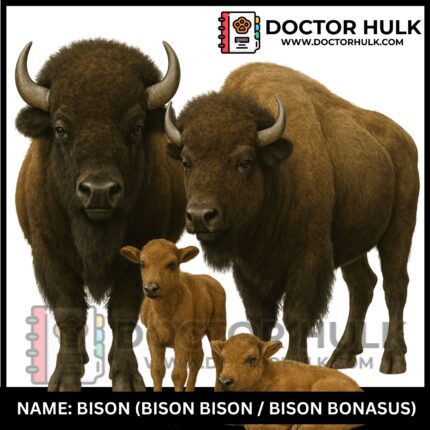Beavers are hardworking, water-loving mammals known for building dams, lodges, and canals. With their strong teeth and busy nature, beavers shape the land more than any other animal, except humans! These animals are peaceful, clever, and important to their environment.
Scientific classification
- Kingdom: Animalia
- Phylum: Chordata
- Class: Mammalia
- Order: Rodentia
- Family: Castoridae
- Genus: Castor
There are two living species of beavers:
- North American Beaver (Castor canadensis)
- Eurasian Beaver (Castor fiber)
Common Names
- Beaver
- River Builder
- “Nature’s Engineer”
- In some local languages, beavers are referred to by terms meaning “wood-cutter” or “dam-maker”
Geographic Distribution
Beavers live in North America, Europe, and parts of Asia. They thrive in:
- Rivers and streams
- Lakes and ponds
- Wetlands and marshy areas
They are not native to Africa, but they are well known through documentaries, zoos, and wildlife programs.

Image Showing Beaver building a dam in a flowing stream (Source: Beaver Trust
Physical Characteristics
Beavers have a chunky body, a flat, paddle-like tail, and webbed feet for swimming.
- Color: Brown fur for warmth and waterproofing
- Teeth: Bright orange, strong enough to cut trees
- Tail: Used for swimming, balance, and communication
- Weight: Up to 30 kg (66 lbs)
- Length: About 1 meter (including tail)
They are excellent swimmers, staying underwater for up to 15 minutes.
Behavior and lifestyle
Beavers are mostly active at night (nocturnal) and live in family units. They build:
- Dams to block rivers and form ponds
- Lodges, homes made of sticks and mud, with underwater entrances
- Canals to float logs to their lodge
They do all this to stay safe from predators and access food in winter.
What do beavers eat?
Beavers are herbivores, eating:
- Tree bark and soft wood (like willow, birch, poplar)
- Leaves and roots
- Aquatic plants
In winter, they store branches underwater to eat when the surface freezes.
Fun facts
- Beaver teeth never stop growing, they stay sharp by constant chewing.
- The largest beaver dam ever found is over 850 meters long.
- Beavers slap their tails on water to warn others of danger.
- Their homes have dry, cozy rooms above water level.
- Beavers can change landscapes, creating new homes for fish, birds, and insects.
Importance to humans
Beavers help people more than most realize:
- Prevent floods by slowing water flow
- Filter water naturally through wetlands
- Create habitats for ducks, frogs, and fish
- Used in the past for fur and castoreum (a scent oil once used in perfume)
Today, they are usually seen as nature’s helpers and are protected in many areas.
Health & common issues
Beavers are strong animals but face problems from pollution and habitat damage.
Common health issues:
- Parasites like fleas or ticks
- Injuries from predators or humans
- Infections from dirty water
- Malnutrition if food sources are blocked
Veterinary Needs (for rescued beavers):
- Wound cleaning and antibiotics
- Parasite removal
- Safe shelter near water
- Nutritional support with natural plants and bark
- Conservation Status
North American Beaver:
-
Least Concern, thanks to conservation and rewilding projects.
Eurasian Beaver:
-
Once nearly extinct, now making a comeback through protected breeding and forest releases
Threats include:
- Habitat loss from damming or farming
- Polluted waterways
- Past overhunting (especially for fur)
Today, they are recognized as essential for healthy water ecosystems.
The beaver is more than just a furry face, it’s a powerful worker and a gentle architect of nature. They build homes and protect wetlands. Beavers quietly help life around them to survive. These clever creatures teach us the value of teamwork, balance, and planning ahead.

Image Showing Beaver family in a pond near their lodge (Source: Forestry And Natural Resources)
Want to know more about wild mammals or report a rescued animal? 📞 Call Doctor Hulk Veterinary Hospital Today @ 08143397614. We care for all of Earth’s wonderful creatures.













Reviews
There are no reviews yet.